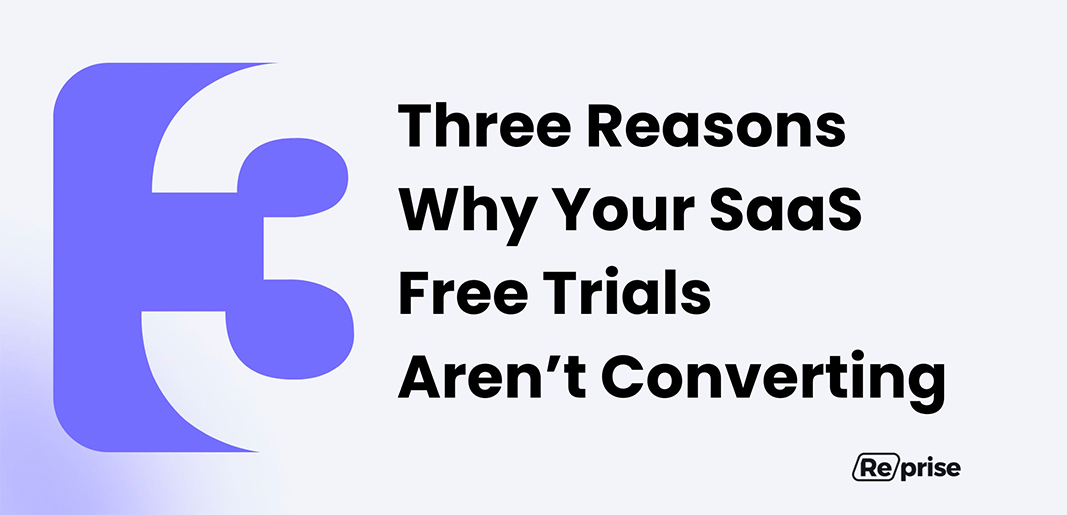Accelerate deals and increase win rates with the leading enterprise demo platform.
Three Reasons Why Your SaaS Free Trials Aren’t Converting

February 13, 2025
Table of Contents
The typical B2B SaaS free trial conversion rate hovers between 15-25% if you’re lucky. However, many free trial users abandon products for a number of reasons — whether the trial didn’t meet expectations, the user was lost in the onboarding experience, or otherwise. Given the considerable resources that go into designing and maintaining a free trial, many companies might wish for a better outcome.
What’s more, many B2B products tend to be complex solutions that require some sort of institutional change to implement. Decisions for these types of products can rarely be made on free trial information alone. According to Gartner, uncertainty in navigating the decision process leads to a 30% decline in customers’ ability to reach a purchase decision at all, and a 42% reduction in the likelihood of their purchasing a premium product.
Let’s look at some of the most common reasons why SaaS free trials fail to convert, and how interactive demos can help go-to-market teams navigate the complexities of the modern B2B buying process.
1. Your users get overwhelmed
Without the proper onboarding process, a new user can get lost in the free trial experience and quickly become inactive. In fact, SaaS companies can lose 75% of new users within the first week without effective onboarding. A whopping 90% of customers believe the companies they buy from “could do better” when it comes to onboarding new users. Just as you wouldn’t demo your full product on a first call, buyers need to be shown what matters to them in your product experience. Instead, they’re often dropped into everything at once.
Many free trials miss elements like interactive product tours or in-app pop-ups that guide the user through the experience they would have in the paid product. And, while the user is guiding themselves through your product experience, they may miss out on the features that would create most value for their use case or organizational pain point.
2. Your product value isn’t clear in the trial
In some cases, the free trial isn’t representative of what the user would experience in the paid product. Many teams hold back their best features and functionality from free trial users, which means users never get to the “wow” moment that sells them on converting to paid.
Also, with some complex products, it can be difficult for users to understand the full value of the product in the limited time window of a free trial. Whether the customer must integrate their own data to realize value, or the product requires extensive training to be fully functional — a guided, live demo may make more sense than leaving your user to discover product value on their own.
3. Your user hasn’t heard from you enough (or at all)
This point goes hand-in-hand with proper onboarding. For complex B2B sales, it’s critical that interactions with prospects guide them along their buying journey by showcasing what’s best about your product experience. Over a typical 14-day trial, the typical prospect may want to hear from sales via different channels from 10 to 20 times.
From a proper welcome email, to a targeted nurture, to the right outreach at the end of the free trial, many sales teams miss the mark when it comes to communicating in a helpful way with free trial prospects. That’s why a demo creation platform can be a far more effective tool for sales to convey product value up-front, while enabling the prospect to multi-thread to other decision-makers later in the enterprise sales cycle.
When an interactive demo is more effective than a free trial
Demos can be more effective than free trials because they’re infinitely customizable, and they work differently throughout different phases of the enterprise sales cycle. An interactive demo can accomplish many of the same goals of a free trial. The user still gets to self-evaluate your product, with the guidance of a demo talk track to keep them focused on the benefits that matter most to their company or use case.
Once the prospect is ready to speak with sales, sales teams can leverage a demo creation platform to customize demos to the specific needs of the prospect, making conversations more targeted and relevant. Instead of reinventing the wheel with each demo, templates targeted at certain personas or use cases make the job of presales much easier — empowering AEs to take demos into their own hands.
And finally, when it comes time for the decision, interactive demos can serve as leave-behinds to enable a champion to convey product value to the rest of the decision-makers on their committee. Rather than leaving your product experience up to chance with a free trial, demos can be a far more effective way for your prospect to see how your product can work within their actual use case or environment — accelerating sales cycles and making the most of everyone’s time.






